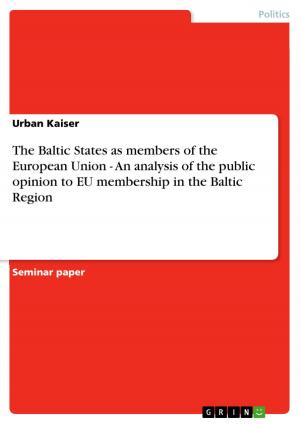Iconicity within the GUI of Microsoft Office and the online-help of Microsoft Office
Nonfiction, Entertainment, Drama, Anthologies| Author: | Nicole Horenburg | ISBN: | 9783638255837 |
| Publisher: | GRIN Publishing | Publication: | February 22, 2004 |
| Imprint: | GRIN Publishing | Language: | English |
| Author: | Nicole Horenburg |
| ISBN: | 9783638255837 |
| Publisher: | GRIN Publishing |
| Publication: | February 22, 2004 |
| Imprint: | GRIN Publishing |
| Language: | English |
Seminar paper from the year 2002 in the subject American Studies - Linguistics, grade: 2.0 (B), Saarland University (Institute for Anglistics, American Studies and Anglophone Cultures), course: Cognitive Linguistics, 17 entries in the bibliography, language: English, abstract: In this paper, I will analyze the appearance of iconicity in the Graphical User Interface (GUI) of Microsoft Office and the online-help for Microsoft Office. Icons are the core element of the concept called GUI, but often the icons themselves are not sufficient to transfer their meaning and function to the user. The language that is used in the online-help supports the understanding of the icons and their different functions used within the GUI. I will show that the iconicity underlying the linguistic information in the online-help is helpful in order to understand the text more easily. Iconicity is a phenomenon that seems to be omnipresent in language and can be discovered in many fields of our everyday life. One is often not conscious of its existence because it is taken for granted. Iconicity is of considerable importance within language. As Crystal (1992:179) puts it: 'It is a close physical relationship between a linguistic sign and the entity or process in the world to which it refers.' As Sebeok (1986:305) explains it: 'Iconicity is a relation between a sign and its designatum. It holds if the sign assigns a property to the designatum by virtue of having a similar property itself.' Iconicity can be analyzed by combining its graphical use along with its appearance in language.
Seminar paper from the year 2002 in the subject American Studies - Linguistics, grade: 2.0 (B), Saarland University (Institute for Anglistics, American Studies and Anglophone Cultures), course: Cognitive Linguistics, 17 entries in the bibliography, language: English, abstract: In this paper, I will analyze the appearance of iconicity in the Graphical User Interface (GUI) of Microsoft Office and the online-help for Microsoft Office. Icons are the core element of the concept called GUI, but often the icons themselves are not sufficient to transfer their meaning and function to the user. The language that is used in the online-help supports the understanding of the icons and their different functions used within the GUI. I will show that the iconicity underlying the linguistic information in the online-help is helpful in order to understand the text more easily. Iconicity is a phenomenon that seems to be omnipresent in language and can be discovered in many fields of our everyday life. One is often not conscious of its existence because it is taken for granted. Iconicity is of considerable importance within language. As Crystal (1992:179) puts it: 'It is a close physical relationship between a linguistic sign and the entity or process in the world to which it refers.' As Sebeok (1986:305) explains it: 'Iconicity is a relation between a sign and its designatum. It holds if the sign assigns a property to the designatum by virtue of having a similar property itself.' Iconicity can be analyzed by combining its graphical use along with its appearance in language.















